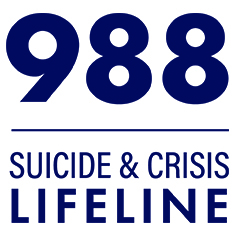Learning from California
May 05, 2017

This month, I am proud to announce the publication of Creating Linguistically and Culturally Competent Suicide Prevention Materials. This new SPRC resource is based on the experiences of the California Mental Health Services Authority (CalMHSA) adapting their Know the Signs (KTS) campaign for linguistic and cultural groups that were not being reached by their English- and Spanish-language materials. An independent evaluation concluded that KTS materials are effective and represent best practices in suicide prevention. Developed by SPRC in partnership with CalMHSA and supported by the Substance Abuse and Mental Health Administration (SAMHSA) as part of a long-standing commitment to meet the unique needs of different groups, our new publication will bring the valuable lessons learned in California to suicide prevention programs across the nation.
The 2012 National Strategy for Suicide Prevention recommends that “Suicide prevention interventions, products, and services should be tailored to the cultural, linguistic, and other needs of each group.” The United States is remarkably diverse, encompassing speakers of more than 350 languages. But even this number does not accurately reflect the diversity of our nation. Linguistic and cultural groups are not monolithic. For example, the dialect, culture, and lives of recent immigrants from Guatemala differ from those of people who arrived in the 1980 Mariel boatlift or whose grandparents walked across the Rio Grande in the 1940s—even though all these people might be described as “Hispanic” or “Spanish-speaking.” Creating suicide prevention messages and materials that respond to the needs of all the languages and cultures in our country is challenging.
Creating Linguistically and Culturally Competent Suicide Prevention Materials was designed to help you meet this challenge. This publication draws from the experience of a state in which more than 200 languages are spoken. It outlines a process that goes beyond translation to consider the language and culture of a community, as well as the context in which members of that community live, work, and raise families. It shows how language, design, format, and dissemination strategy can affect the ability of materials to reach an audience and move them to action. Before, after, and in-between illustrations provide compelling examples of how and why materials were adapted to reach specific linguistic and cultural audiences. Our new guide offers a process that can be used to address the needs of any audience—including those whose native language is English, but whose culture and history may not reflect those of you or your colleagues in suicide prevention.
The process outlined in our new publication is consistent with the principles of the Effective Prevention Model and the Strategic Planning Approach, which can help you select linguistic and cultural groups that should be prioritized for prevention based on criteria such as need, equity, opportunity, and community readiness.
Effectively reaching all of the linguistic and cultural groups that make up our great nation is a daunting job. But it is our job. I sincerely believe that Creating Linguistically and Culturally Competent Suicide Prevention Materials will help us make us progress in bringing effective prevention to everyone in our nation.
